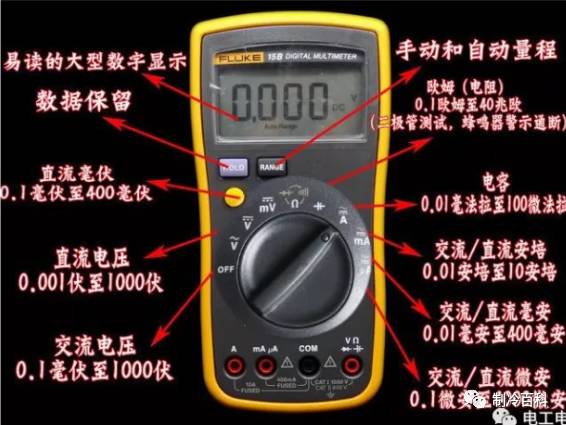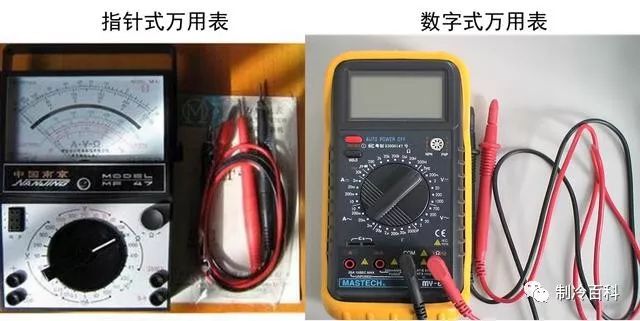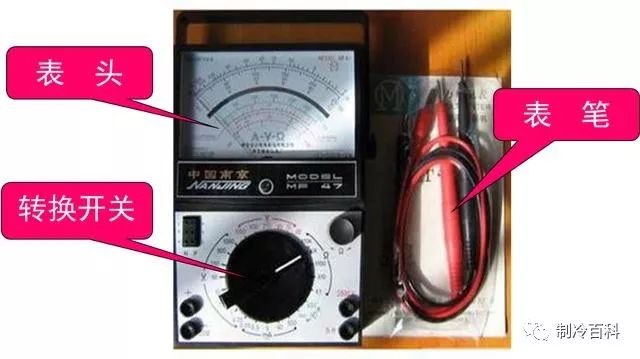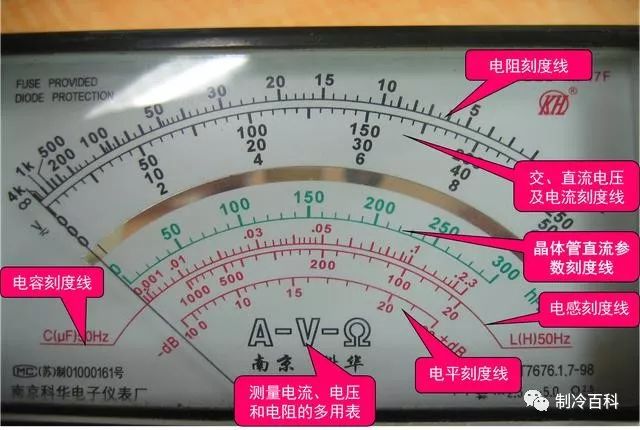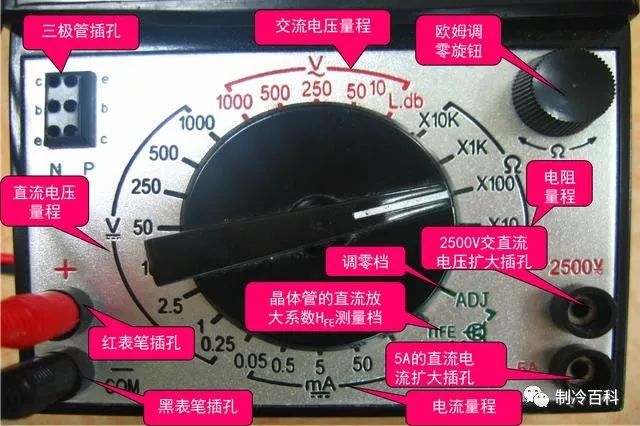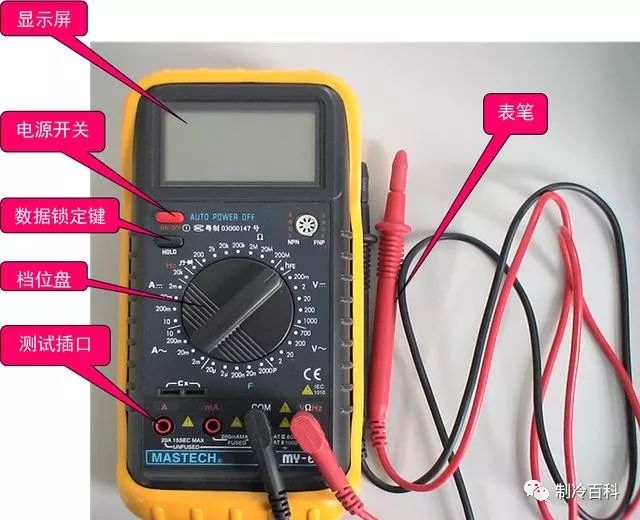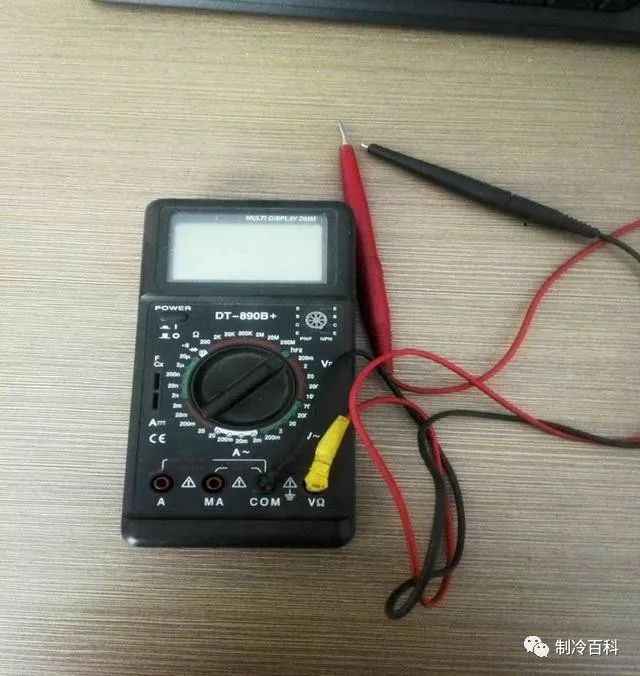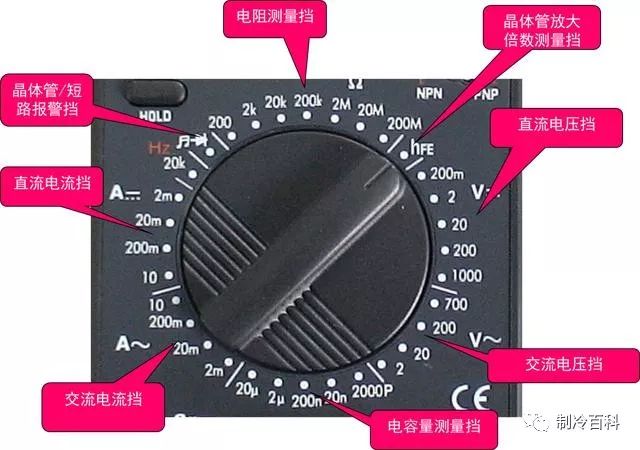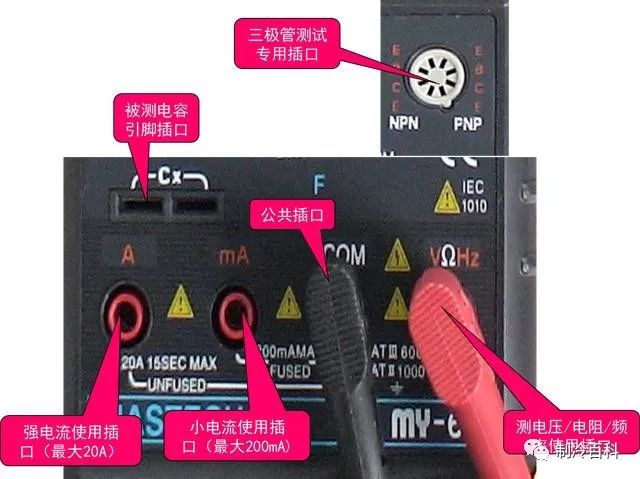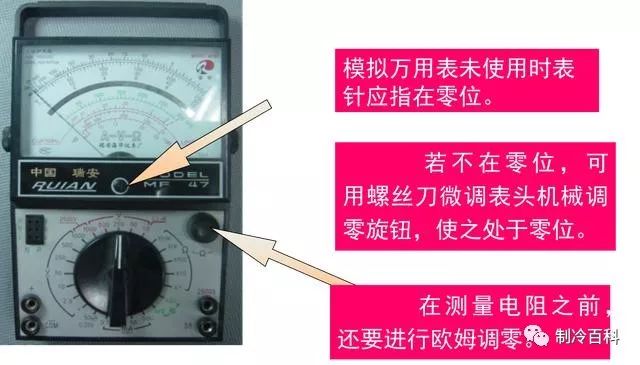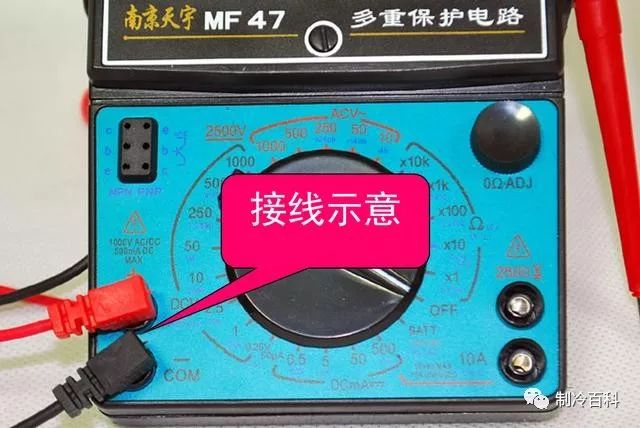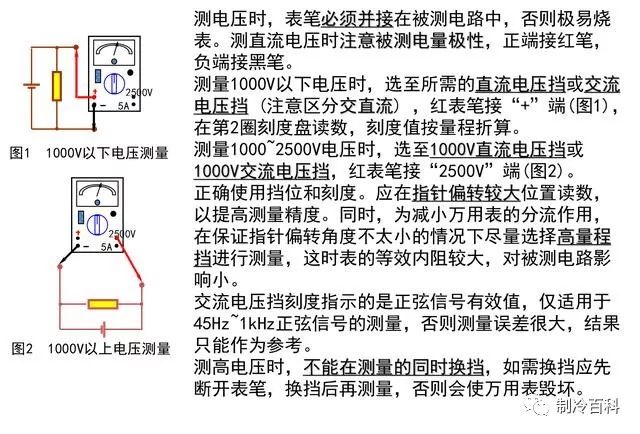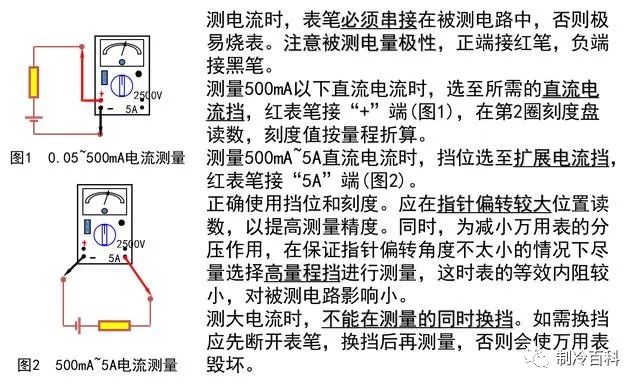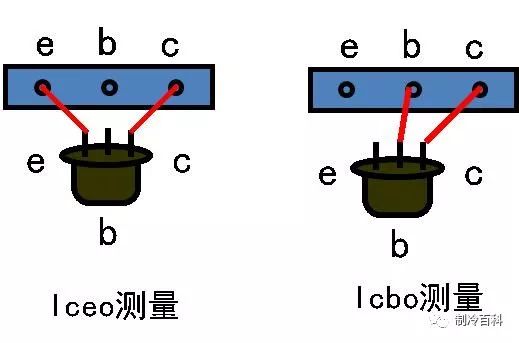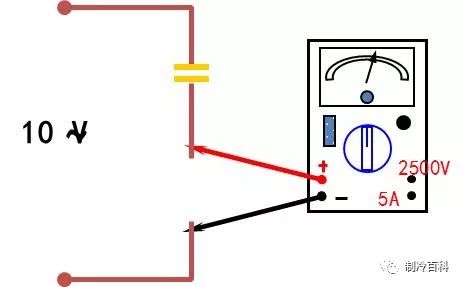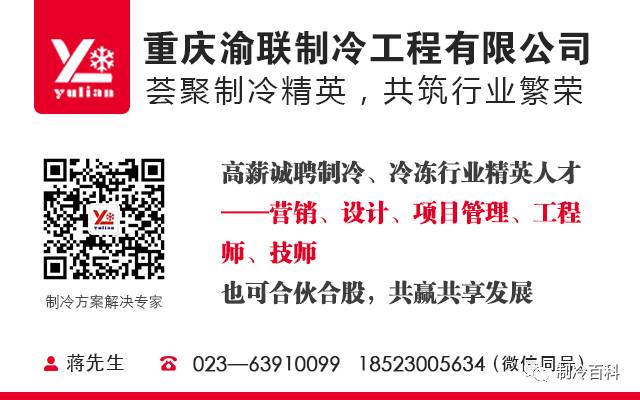
Correctly using a multimeter can not only quickly determine the location of faults but also prevent damage to electrical equipment and the multimeter itself. Below, I will share some tips for using a multimeter.
Measure first check the range, not checking means not measuring Do not change the range while measuring, switch to the empty range after measurement The dial should be level, read the readings correctly The range must be appropriate, readings must be correct Measure resistance without power, discharge before measuring capacitance Adjust to zero before measuring resistance, change range must adjust to zero Remember the black negative, black connects to + inside the meter Measure current in series, measure voltage in parallel Do not reverse polarity, use one hand as a habit
A multimeter can generally be divided into two types: analog multimeters and digital multimeters.
Analog multimeter:
The structure of an analog multimeter: There are many types of analog multimeters, but their basic structure is similar. The structure of an analog multimeter mainly consists of the meter head, switch (also known as a selection switch), and measurement circuit.
Meter head: This is the display device for measurement; the meter head is actually a sensitive ammeter.
Switch: Selects the type and range (or multiplier) of the measured quantity.
Measurement circuit: Converts different types and sizes of measured quantities into direct current that the meter head can accept.
Meter head:
Switch:
Digital multimeter:
Dial:
Ports:
Using the multimeter—zeroing
Correct wiring:
The red probe connects to the “+” polarity port, the black probe connects to the “—” or “*” or “COM” polarity port.
When measuring direct current, pay attention to positive and negative polarity to avoid reversing the needle.
When measuring current, the meter should be connected in series in the circuit being tested; when measuring voltage, the meter should be connected in parallel across the circuit.
When measuring transistors, remember that the red probe connects to the negative terminal of the internal battery; the black probe connects to the positive terminal of the internal battery.
Correctly selecting the measurement range:
When measuring voltage, the switch should be set to the corresponding voltage range; when measuring current, it should be set to the corresponding current range, etc.
When selecting the current or voltage range, it is best to keep the needle above two-thirds of the scale; when selecting the resistance range, it is best to keep the needle at the middle of the scale.
When measuring, if uncertain about the range of the measured value, first turn the switch to the corresponding maximum range, then gradually reduce it to the appropriate range based on the degree of needle deflection.
Common measurement methods—measuring AC and DC voltage
Measuring current:
Measuring resistance:
Select range and adjust to zero: When measuring resistance, first select the appropriate resistance range, then short-circuit the probes, and adjust the “Ω” zero adjuster to make the needle return to 0 (this should be done every time the range is changed).
Measurement and reading: Connect the probes to both ends of the resistor, and take the reading. The resistance value is the reading on the resistance dial multiplied by the current selected resistance range multiplier.
Range: Choose a range that keeps the needle between one-third to two-thirds of full scale to reduce measurement error.
Probe polarity: The battery in the multimeter works when measuring resistance; the battery “+” connects to the panel “-“. When using the multimeter to determine the polarity of diodes or rectifiers, be mindful of probe polarity, as current flows from the black probe and returns through the red probe.
Measuring resistance in a circuit: Must be done with power off. If uncertain whether there are parallel resistors, the resistor must first be disconnected from the circuit; if there is a capacitor in the circuit, it must be discharged before measurement.
Checking the leakage resistance of electrolytic capacitors: Set the switch to the R×1K range, the red probe must connect to the negative of the capacitor, and the black probe connects to the positive of the capacitor.
Measuring the DC current gain hFE of a transistor:
Select the ADJ range, short the probes, adjust the ohm zero adjuster so that the needle points to 300hFE.
Select the hFE range, insert the leads of the transistor being tested into the corresponding E, B, C sockets of the transistor tester, and the needle deflection indicates the DC current gain of the transistor.
Insert N-type transistors into NPN sockets, and P-type transistors into PNP sockets.
Measuring the reverse cutoff current Iceo and Icbo of a transistor:
Iceo: Reverse cutoff current between collector and emitter (base open).
Icbo: Reverse cutoff current between collector and base (emitter open).
Set the switch to R×1K, short the probes, and adjust the zero ohm potentiometer to make the needle return to zero (at this time, the full-scale current value is about 90μA).
Separate the probes, place the transistor being tested into the socket as shown, and the scale indicated by the needle multiplied by 12 is approximately the reverse cutoff current of the transistor.
If Iceo>90μA, use R×100 range for measurement (at this time, the full-scale current value is about 900μA).
Determining the polarity of diode leads:
Diodes are semiconductor devices with obvious unidirectional conductivity or nonlinear current-voltage characteristics. Generally, the forward resistance of low-power germanium diodes is 300~500Ω, and the reverse resistance is tens of kilohms; silicon diodes have a forward resistance of about 1kΩ or more, and a reverse resistance above 500kΩ. The greater the difference between forward and reverse resistance, the better.
Range selection: Generally select R×1K or R×100 range for measurement; do not use R×1 or R×10K range. Because using R×1 range can cause excessive current, easily burning out the diode, while using R×10K range can cause excessive voltage, easily causing the diode to break down.
Polarity judgment: Connect the two probes to the two ends of the diode, compare the two measured resistance values, the lower resistance value corresponds to the lead connected to the black probe, indicating the diode’s positive terminal, because in the multimeter’s resistance measurement circuit, the red probe is connected to the internal battery’s negative terminal, and the black probe is connected to the internal battery’s positive terminal.
Measuring capacitance and inductance:
Capacitance measurement: Refer to the diagram for measurement method, select C.L.dB (10V AC) range, and read the capacitance measurement value on the C(μF) 50Hz scale.
Inductance measurement: Refer to the diagram (replace capacitance with inductance), select C.L.dB (10V AC) range, and read the inductance measurement value on the L(H) 50Hz scale.
Precautions when using a multimeter:
Before using a multimeter, you must be familiar with the method of using the multimeter, the measurement principles, the types and ranges of measurements, and verify that the switch and ports are correct.
The multimeter must be placed horizontally during use, and before use, the mechanical zero should be adjusted.
After measurement, turn the range selection switch to the highest position to prevent damage to the meter during the next measurement.
If a multimeter is not used for a long time, the battery should be removed to avoid deterioration and leakage, damaging the circuit board.
When measuring voltage in circuits with inductive reactance, the multimeter must be disconnected before cutting off the power to prevent high voltage damage to the voltmeter caused by self-induction phenomena.
Reading is a form of growth | Sharingis a virtue
More Technical Articles:
Detection methods and maintenance techniques for air conditioning computer boards
Video teaching┃Common faults and repairs of Gree inverter air conditioners
Comprehensive guide—Principles and applications of central air conditioning systems training
Basic knowledge of inverter air conditioning repair (serial 1)
Installation and debugging of expansion valves in cold storage
Considerations for the design of central air conditioning ventilation systems
Principles of VRV multi-split technology application
Cleaning procedures and details for cooling towers
Refrigeration directory electronic business card
Cooperation promotion phone: 18273192192
Refrigeration Encyclopedia WeChat technical group
Group entry notice:
1. Refrigeration Encyclopedia public account established: “Freezing and Refrigerating Group”, “Central Air Conditioning Group”, “Household Air Conditioning Group”, “Heat Pump Water Group”, “Precision Air Conditioning Group”,“Design and Construction Group”, now open for free entry.
2. This group prohibits advertising, spam, public account cards, and QR codes. Violators will be kicked out directly!
3. Entry into the group requires at least one year of work experience in refrigeration and heating and actively sharing and discussing refrigeration technology knowledge.
4. Scan or long-press to identify the QR code below to add the editor as a friend, and the editor will send you the “electronic business card” link, which you can use to enter the group.
5. The “electronic business card” can be interacted and exchanged in the refrigeration encyclopedia group, and you can also interact with refrigeration experts.
